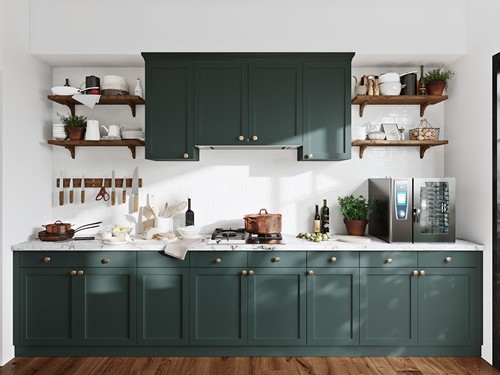
Photo by Jafar Mansuri on Unsplash
To resurface or replace? That's the question. Consider replacing if:
Otherwise, you may want to refinish what you have to make your cabinets.
How to Replace Cabinets
Replacing cabinets rarely involves building them yourself. Most kitchen remodeling professionals don't even do that. You can purchase pre-made cabinets. They'll fit in most kitchen. But don't forget to measure.
Start by evaluating how the cabinets are attached. Most cabinets simply unscrew from the wall for clean removal. You can now hang new ones in their place. But remember, if you need to stain or finish, always do that and let them dry before hanging. It will just be easier when they're on the floor or a work table.
If it's just the hardware you don't like, consider replacing it instead of the whole cabinet. That's generally a small job that just needs a screwdriver and new handles.
How to Give Cabinets a New Look
A coat of paint or stain can work wonders. But know that refinishing actually takes a lot longer than hanging new. Plan for three to eight weekends of work and a semi-functional kitchen during that time. The more cabinets, the longer it will take. Let's get started
*Pro tip* Some woods soak up oils like a sponge, so you might need multiple coats to achieve the desired look. That's one reason the job takes multiple weekends since each layer must dry.
About the Author

Richard Powers
Born and raised in Lynn, Massachusetts, Richard has been a successful Real Estate Agent, specializing in the Greater Lynn area for 28 years. He was awarded the prestigious Centurion Award for 19 years in honor of his outstanding number of listings and sales and was the recipient of numerous Diamond Awards for exceptional sales and service.
In his spare time, Rich enjoys golfing, hiking with his dogs and practicing Karate, in which he holds a second-degree black belt. He also enjoys volunteering for various animal rescue groups with his wife of 33 years and is especially dedicated to supporting Faithful Companions, a local non-profit group that helps families in need receive life saving veterinary treatment for their cherished pets.
The next time you need an experienced Real Estate Agent, be sure to give Rich a call. His professionalism and knowledge of the Real Estate Industry are unrivaled.
